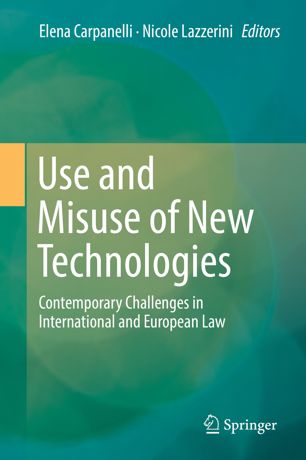

Most ebook files are in PDF format, so you can easily read them using various software such as Foxit Reader or directly on the Google Chrome browser.
Some ebook files are released by publishers in other formats such as .awz, .mobi, .epub, .fb2, etc. You may need to install specific software to read these formats on mobile/PC, such as Calibre.
Please read the tutorial at this link: https://ebookbell.com/faq
We offer FREE conversion to the popular formats you request; however, this may take some time. Therefore, right after payment, please email us, and we will try to provide the service as quickly as possible.
For some exceptional file formats or broken links (if any), please refrain from opening any disputes. Instead, email us first, and we will try to assist within a maximum of 6 hours.
EbookBell Team

4.0
26 reviewsThe ever-increasing use of technology is challenging the current status of the law, bringing about new problems and questions. The book addresses this trend from the perspective of International law and European Union law and is divided into three main thematic sections. The first section focuses on the legal implications of the use of technology either for law enforcement purposes or in the context of military activities, and examines how this use adds a new dimension to perennial issues, such as the uneasy balance between security concerns and the protection of individual rights, and defining the exact scope of certain State obligations. In so doing, it takes into account a range of current and potential scenarios at the international, regional and domestic level, including the use of killer robots, databases, drones and technology in general to patrol borders, exchange information on criminal suspects, maintain public order, target suspected terrorists and conduct military activities. In turn, the second section examines the role of institutional and non-institutional actors in establishing substantive normative standards for the use of high-tech applications. In this respect, it focuses both on the role that European courts have played so far, and on how other actors’ initiatives can contribute to the construction of a new legal framework for technology-related activities. Lastly, the third section has a two-fold focus: the first part investigates how the increasing reliance on technology is affecting traditional rules on international responsibility, and is challenging, in particular, the attribution of wrongful conduct to States and international organizations. The second part addresses issues of jurisdiction and justiciability. Given the scope of its coverage, this timely book addresses an important lacuna in the current legal scholarship, exploring some of the most recent applications of technology and the legal issues arising as a result. Readers will gain novel insights into the challenges posed to International law and European law by the growing reliance on technology, taking into account both its uses and misuses.